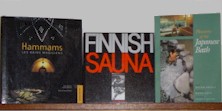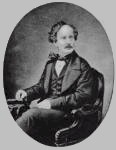2: Why should it interest us?

There has never been a major study of the Victorian Turkish bath. In earlier times, writers such as Lady Mary Wortley Montagu1 (in the eighteenth century) and Richard Robert Madden2 and William Makepeace Thackeray3 (in the first half of the nineteenth) have described visits to a hammam, sometimes quite amusingly.
 While today there are a number of excellent works which deal with Islamic hammams in the Maghreb and Middle East,4 the Finnish sauna,5 the Japanese bath,6 and the baths of the ancient Greek and Roman world.7
While today there are a number of excellent works which deal with Islamic hammams in the Maghreb and Middle East,4 the Finnish sauna,5 the Japanese bath,6 and the baths of the ancient Greek and Roman world.7
Yet the history of the Victorian Turkish bath remains almost totally neglected. I do not know why this should be so, for it is a fascinating history, and one which impinges on many aspects of Victorian life, sometimes quite unexpectedly.
The Victorian 'Turkish Bath Movement'—for undoubtedly it was a movement—grew from a seed planted in a single (and singular) travel book

by David Urquhart,8 and was nurtured in the pages of a serious and somewhat humourless political newspaper, The Sheffield Free Press. We can, therefore, clearly trace its progress from the first experimental bath constructed at St Ann's Hydropathic Establishment in Ireland in 1856; follow it across the Irish Sea to the industrial towns in the north of England, and the population centres of Scotland; and simultaneously southwards, through the midlands, until it finally arrives in London four years later in 1860.
 Over six hundred Turkish baths have so far been identified in the British Isles alone. These include baths run by individuals and those by companies; baths in asylums and hospitals; baths in hotels and hydros; baths in private houses and members' clubs; and even baths for those travelling in ocean liners, and baths for animals. Yet today, barely a score remain, and of this still diminishing number, less than half were actually built during Queen Victoria's reign.
Over six hundred Turkish baths have so far been identified in the British Isles alone. These include baths run by individuals and those by companies; baths in asylums and hospitals; baths in hotels and hydros; baths in private houses and members' clubs; and even baths for those travelling in ocean liners, and baths for animals. Yet today, barely a score remain, and of this still diminishing number, less than half were actually built during Queen Victoria's reign.
It seems important, therefore, and a matter of some urgency, to document the history of the Victorian Turkish bath. A few of those who owned or managed them, and some of those who bathed (and continue to bathe) in them, are still alive. Unless public awareness of these wonderful buildings is raised, we may find that the bulldozers have razed the last few magnificent examples which yet remain standing.
For there is much to interest the historian in this unique pioneering movement which initiated the building of so many Turkish baths, not just in the British Isles, but in Victorian cities across their Queen's empire.
 Neither Urquhart, nor his gifted wife Harriet, have received their due from historians. Yet both were extremely interesting people, as were many others who owned, worked in, or merely bathed in, 'the bath'.
Neither Urquhart, nor his gifted wife Harriet, have received their due from historians. Yet both were extremely interesting people, as were many others who owned, worked in, or merely bathed in, 'the bath'.
And the Victorian Turkish bath adds to our knowledge of many aspects of Victorian life: the working-men who might have been campaigning for the vote but who selflessly concerned themselves with their country's foreign policy; the mixing of the different classes of society; contemporary sanitary conditions and people's attitudes to cleanliness; the esoteric ritual of the Turkish bath; the early provision of bathing facilities for women; the architecture, furnishings, and decoration of the buildings; the development of heaters able to raise air to the requisite temperature; the attitudes of the medical 'profession' to what many saw as the quackery of the Turkish bath; the use of the bath in Victorian hospitals and asylums; the rise of the limited liability company and the founding of the Rochdale Pioneers' co-operative bath.
The list of topics is infinitely long and varied—a website such as this, seems to be the most appropriate means of introducing the subject to a wider range of people than might be attracted by a more traditional book. This is our challenge.

